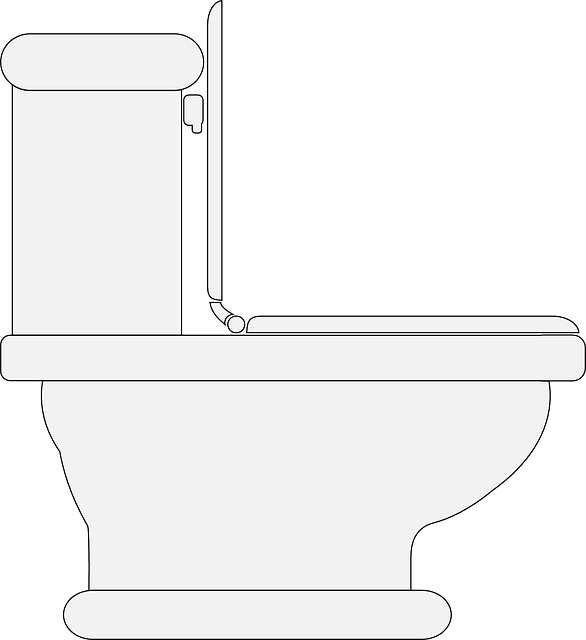A running toilet, caused by leaky flush valves or faulty flapper mechanisms, wastes water and raises utility bills. To stop this, identify the leak source (e.g., worn-out flappers, mineral buildup) through observation of toilet behavior and checking common problem areas. Regular tank component cleaning prevents future issues. Tighten connections or replace worn parts using plumbing tools to immediately curb water wastage. DIY solutions like replacing the flapper valve, clearing debris from the fill valve, and adjusting the float chain can save money on repairs and prevent long-term plumbing damage.
A running toilet isn’t just an annoying noise—it’s a constant leak that can cost you hundreds in wasted water and higher bills. Understanding the root cause is key to fixing this common problem. This article guides you through the process, from identifying the source of the leak (“Diagnosing the Leak”) to implementing effective solutions (“Effective Solutions”). Learn how to stop a running toilet today and start saving money tomorrow.
- Understanding the Problem: What Causes a Running Toilet?
- Diagnosing the Leak: Identifying the Source of Water Waste
- Effective Solutions: Stopping the Leak and Saving Money Today
Understanding the Problem: What Causes a Running Toilet?

A running toilet is a common plumbing issue that can waste vast amounts of water and significantly increase your utility bills. Understanding what causes this problem is the first step in learning how to stop it. The primary culprit behind a running toilet is a leaky flush valve or a faulty flapper mechanism within the tank. Over time, these components can degrade due to wear and tear, mineral buildup, or corrosion, leading to constant water flow into the bowl even when not in use. Other factors include improper flushing technique, such as overloading the toilet with too much waste at once, which can cause the flush valve to stay open longer than necessary.
To effectively address a running toilet, it’s crucial to identify the specific source of the leak. This may involve examining the flapper for tears or wear and checking if the fill valve is functioning correctly. Regular maintenance, such as cleaning mineral deposits from the tank and ensuring all parts are in good working condition, can prevent these issues from arising. If you notice persistent dripping or a continuous flow of water, consider using plumbing tools like a wrench to tighten loose connections or replace worn-out parts to stop the wastage immediately.
Diagnosing the Leak: Identifying the Source of Water Waste

Toilet leaks can be frustrating and costly, wasting precious water and padding your utility bills. Diagnosing the source of a running toilet is the first step to fixing it today. Start by observing the toilet’s behavior – does it leak continuously, or only when flushed? This distinction points to different causes.
Next, check common problem areas: the flapper valve, fill valve, and toilet tank. A leaky flapper, worn seals, or an oversized float can all contribute to constant water flow. Inspect these parts for wear, damage, or improper adjustments. Replacing faulty components is often a simple DIY project using readily available parts, effectively stopping the water waste and saving you hundreds in the long run.
Effective Solutions: Stopping the Leak and Saving Money Today

A running toilet isn’t just a nuisance; it’s a costly problem that can lead to significant water waste and sky-high utility bills. Fortunately, fixing a running toilet is often surprisingly simple and straightforward. Before calling in a plumber, try these effective DIY solutions to stop the leak and start saving money today. By addressing the issue promptly, you can prevent unnecessary damage to your plumbing system and keep your wallet happy.
Start by checking the flapper valve, the rubber seal that covers the toilet’s drain. A worn-out or poorly fitting flapper can cause a continuous flow of water. Replace it with a new one designed specifically for your toilet model, ensuring a tight seal to stop the leak. Next, examine the fill valve for any debris blocking its opening. Clear any obstructions and adjust the float chain to control the water level, preventing overfilling and unnecessary drainage. These simple steps can quickly resolve most running toilet issues, saving you both time and money in the long run.
A running toilet not only wastes precious water but also inflates your utility bills. By understanding the causes, diagnosing the leak effectively, and implementing the right solutions, you can stop this wasteful problem today. Don’t let a tiny issue turn into a big expense – take control with these simple steps to save money and conserve our most precious resource. Learn how to stop a running toilet now and experience the benefits of a more efficient, cost-saving home.
